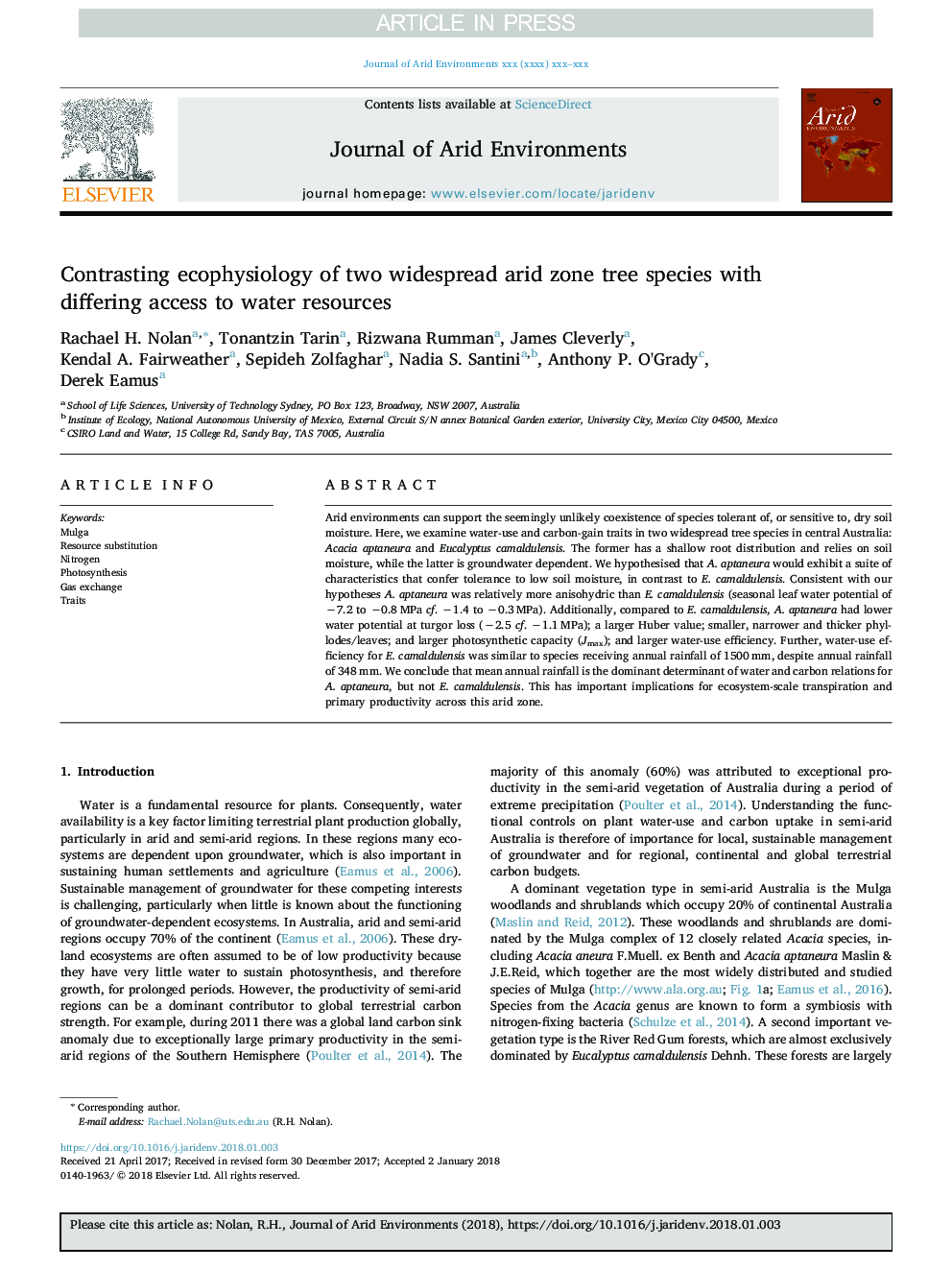| Article ID | Journal | Published Year | Pages | File Type |
|---|---|---|---|---|
| 8848496 | Journal of Arid Environments | 2018 | 10 Pages |
Abstract
Arid environments can support the seemingly unlikely coexistence of species tolerant of, or sensitive to, dry soil moisture. Here, we examine water-use and carbon-gain traits in two widespread tree species in central Australia: Acacia aptaneura and Eucalyptus camaldulensis. The former has a shallow root distribution and relies on soil moisture, while the latter is groundwater dependent. We hypothesised that A. aptaneura would exhibit a suite of characteristics that confer tolerance to low soil moisture, in contrast to E. camaldulensis. Consistent with our hypotheses A. aptaneura was relatively more anisohydric than E. camaldulensis (seasonal leaf water potential of â7.2 to â0.8â¯MPa cf. â1.4 to â0.3â¯MPa). Additionally, compared to E. camaldulensis, A. aptaneura had lower water potential at turgor loss (â2.5 cf. â1.1â¯MPa); a larger Huber value; smaller, narrower and thicker phyllodes/leaves; and larger photosynthetic capacity (Jmax); and larger water-use efficiency. Further, water-use efficiency for E. camaldulensis was similar to species receiving annual rainfall of 1500â¯mm, despite annual rainfall of 348â¯mm. We conclude that mean annual rainfall is the dominant determinant of water and carbon relations for A. aptaneura, but not E. camaldulensis. This has important implications for ecosystem-scale transpiration and primary productivity across this arid zone.
Related Topics
Physical Sciences and Engineering
Earth and Planetary Sciences
Earth-Surface Processes
Authors
Rachael H. Nolan, Tonantzin Tarin, Rizwana Rumman, James Cleverly, Kendal A. Fairweather, Sepideh Zolfaghar, Nadia S. Santini, Anthony P. O'Grady, Derek Eamus,
